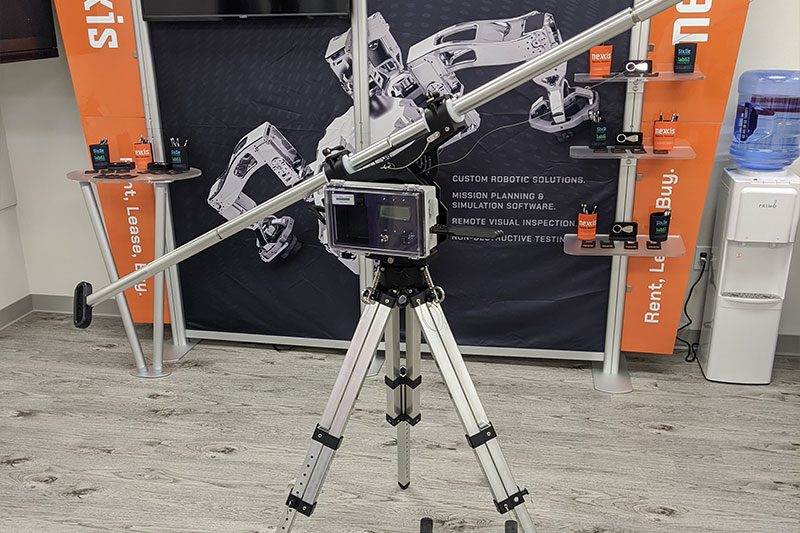Zenith In Action: Peoples Gas Vertical Shaft Inspection

Vertical shaft inspections have always been a challenge. They present multiple risks and usually require extended asset downtime. The past few years have seen many attempts to design a realistic alternative to the cumbersome human entry method that’s been the default for so long.
Most of the designs have had limited success, either at the concept stage or when trialled in real-world situations. However, there’s been one stand out product that’s being embraced around the globe – that of the Zenith, designed and created by Interactive Arial.
The following is an example of how this deceptively simple piece of equipment is revolutionising the world of NDT testing.
The Asset
Peoples Gas in Chicago was obliged to meet a three-yearly monitoring programme to ensure the integrity of exposed pipelines and to note and maintain or repair any atmospheric corrosion. Part of this inspection included the vertical shafts that led down to a network of tunnels. The company was in the middle of upgrading these assets, so some of the shafts were new and others a lot older.
All previous inspections had been carried out by inspectors climbing down vertical ladders into the older shafts (or rope access into the newer ones) and using a variety of cameras to capture images from which the data was taken.
The Challenges
The task came with a multitude of requirements regarding both safety and the quality of data collection. They were defined as follows:
- Remove the need for human entry: The company was keen to use an alternative method that didn’t require the inspectors entering dangerous confined spaces or having to climb down the ladders located in the older shafts.
- Increase the quality of data collection: Past inspections were limited to where the inspectors could see and reach. Therefore, areas behind pipes or other obstacles – especially those on the other side of the shaft – couldn’t be assessed. The image quality wasn’t standard, as the cameras used would be different from one inspection to the next. The inspectors were also missing smaller defects that weren’t visible to the naked eye.
- Increase the percentage of the asset covered: The company required a vast improvement in the area of the surfaces inspected. The goal was to gain 100% coverage of wholly reliable data.
The Solution
The Zenith 4K vertical inspection camera was considered the ideal tool to achieve all of the aims. This vertical space inspection unit was designed for exactly such a task and combines various cutting-edge systems to do so.
- Zenith has multiple configuration options, meaning that the offset entry points over the older vertical shafts could be easily reached. It also allowed for a gas detection monitor to be lowered into each shaft prior to the inspection, ensuring there no natural gas leaks or plumes.
- Zenith is fitted with a stabilised camera that captures 18MP photos with 30x optical zoom and 4K video.
- The camera hangs from a cable and is free spinning, allowing for a 360o capture and allowing the operator to visualise virtually every surface within the vertical shafts.
In addition, the ease in which the inspection is carried out is enhanced, thanks to the battery-powered Smart Winch System that needs no manual operation during the inspection.
The resulting inspection met and exceeded all of the company’s requirements.
- No human entry was required
- 100% coverage was achieved
- The data was all of the highest quality
- The tagging location of the system allows the company to track the rate of corrosion when future inspection is carried out.
Peoples Gas was delighted with the results and stated that, in this case, such advanced robotics are a wholly viable alternative to traditional manual inspections.
Contact us to find out more about the Zenith 4K vertical inspection camera or any of our other custom solutions, or request a quote online.
Carry on reading How Robots Are Shaking up NDT Inspections to find out more.
